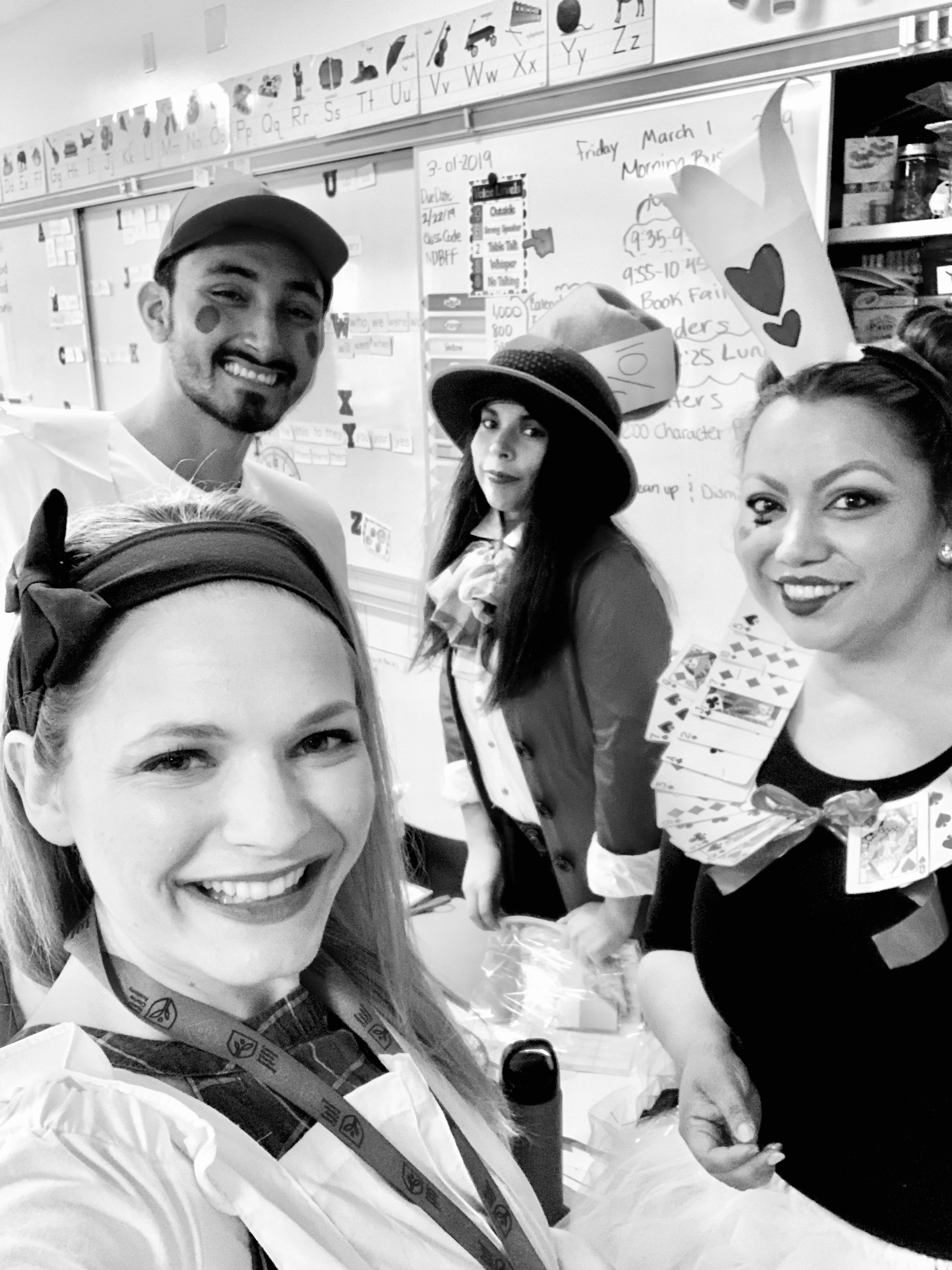I’m Arielle and I’m an Inclusive Education Consultant.
I’ve spent the past 10 years immersed in all things Special Education…from teaching, to leadership, and most recently, navigating the IEP process from the parent side for my 5 year old stepson.
I have a Bachelor of Science in Elementary Education from the University of Delaware and a Master of Arts in Educational Leadership from Columbia University. I am also licensed to teach general education and special education in California.
I grew up in New Jersey, but always dreamed of living in California. As soon as I graduated college, I moved out to the west coast, and within a few weeks, I accepted my first job, as a Special Education Teacher in Los Angeles.
Over the past decade, I have been fortunate to have had a variety of teaching and leadership experiences in the special education space. My passion for full inclusion has driven my work in each of them.
Growing up and student teaching on the east coast, inclusion and co-teaching were all that I knew. As a child, I was often assigned to a classroom that had 2 teachers (and I always felt lucky when I was)! What child wouldn’t want 2 teachers to build relationships with and to learn from?
In California, I quickly learned that fully inclusive, and co-taught classrooms were not the norm (and a decade later, continue not to be).
A year before moving to Los Angeles, I had the opportunity to student-teach in an inclusive classroom in Delaware and consistently observed students with disabilities successfully accessing grade level curriculum. Through the co-teaching model and strategic differentiation of instruction, the teachers were able to work thoroughly with the students in the classroom - both with disabilities and without.
Observing two teachers strategize their lesson delivery was quite inspiring. Each one of them brought different ideas to the table, based on their individual strengths, teaching styles, and insight into what students in their classroom needed. The low student to teacher ratios within the regular classroom setting allowed teachers the ability to provide differentiated instruction and work with their students in smaller groups.
Fast forward to my first teaching job in Los Angeles as a high school special education teacher where it became clear that the majority of my students had NEVER experienced the academic success that my students in Delaware had.
I was perplexed by just how “far behind” my Los Angeles students were performing in reading, writing, and math. By 10th grade, they hadn’t even acquired some of the foundational skills that my third graders (who also had disabilities) had achieved.
Not only did they struggle to read grade level texts, they also struggled to read and respond to the text messages their friends sent them. It was disheartening. How could the school system fail them so gravely?
I spent countless afternoons, plopped in front of the office file cabinets, leafing through cumulative record files for my students trying to answer just that.
Here is what I found:
On paper, many of the students had received “individualized” services in self-contained, special education classrooms since early on in elementary school. Yet years later, they still couldn’t perform basic functions that they were intellectually capable of.
Rather than remediating their academic gaps, being removed from their regular classrooms to be enrolled in a “special class” for just students with IEPs, seemed to have further exacerbated them.
The designated “special education classrooms” that they were assigned to, had students of multiple grade levels in them. My students’ report cards showed that they had had the same teacher for sometimes 3 school years! I felt devastated that my students hadn’t had a chance to experience the teaching styles of more teachers over their educational careers.
With that being said, having had a single teacher that was responsible for teaching the curriculum and standards of 3 different grade levels at 1 time (with is something that even the most skilled teacher can't reliably do) my students were likely NOT being exposed to the full breadth and rigor of the state content standards that they are entitled to be taught.
Years of school records showed me most of them had been in the same class together for most of their education. They were “stuck” where they were and with whmo they were with, missing out on a whole grade level of other peers that they could have learned from and developed friendships with
Their classrooms had likely become “catch all” room for any student that was struggling. When every single child in the classroom has significant needs and there are no students that can serve as strong peer role models for working independently, the teacher’s attention splinters between all the students, and no single student is actually getting the level of attention and support they need to truly succeed.
All of the beauty that I had witnessed in the co-taught and co-planned setting in my own education in New Jersey and my student teaching experience in Delaware, had never been offered to my students in Los Angeles.
I quickly realized that if I wanted to see change, I would have to BE the change.
During my 3rd year as a teacher, through collaboration with school and district administration, teachers, and families, I successfully dissolved a self contained special education class of 3 different grade levels, into a full inclusion model.
This shift gave students with disabilities access to grade level curriculum and peer role models. It also allowed both students with disabilities and their peers, access to 2 amazing teachers who both had expertise in different areas, and collaborated to meet the individual needs of their students.
& that was JUST THE START of my lifelong journey as an INCLUSIONIST.
So what did I do?
My mission is to transform the special education space and narrow the social and academic gaps that exist between students with disabilities and their typically developing peers, by providing innovative solutions to school teams that equip and enable them to support ALL STUDENTS.
My Services
My mission is to transform the special education space and narrow the social and academic gaps that exist between students with disabilities and their typically developing peers, by providing innovative solutions to school teams that equip and enable them to support ALL STUDENTS.
-
As a teacher, I spent many years “re-thinking” and “re-working” the special education programs at the schools that I taught at. I decided to expand my reach by developing a private consulting practice.
As an Inclusive Education Consultant, I serve as a thought partner for schools and districts in developing and strengthening their inclusive special education programing.
-
In many school systems, students that struggle academically and/or socially, are removed from their grade level classrooms and placed in separate special education settings. Rather than remediating their gaps, removing them from their regular classrooms and enrolling them in “special classes” further exacerbates them.
Children learn from each other, for better or for worse. Research shows that when students are surrounded by higher performing individuals, they rise to the occasion. Teachers can now recognize the strengths that each child brings to their classroom with the more inclusive models I have created.
-
I have a Bachelor of Science in Elementary Education from the University of Delaware and a Master of Arts in Educational Leadership from Columbia University. I am also licensed to teach general education and special education in California.
Inclusive Education Consultant for Educators, Administration & Support Staff
WORK WITH ARIELLE STARKMAN










